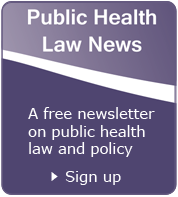Attention-Deficit/Hyperactivity Disorder
Attention-deficit/hyperactivity disorder (ADHD) is one of the most common neurodevelopmental disorders of childhood, affecting more than 6.4 million US children aged 4–17 years. Although ADHD is usually first diagnosed in childhood, it often lasts into adulthood. ADHD is a serious public health concern because of its high prevalence; chronic nature; significant impact on school performance, family life, and peer relationships; and estimated annual cross-sector costs of $38–72 billion. ADHD cannot be cured, but many treatment options exist, including parent training, school accommodations and interventions, medications, and behavioral intervention strategies. State law and public (e.g., Medicare, Medicaid) and private health insurance reimbursement policies are often designed to guide physicians toward best practices for ADHD treatment while also affecting a patient’s access to these treatment options.
- Treating Attention-Deficit/Hyperactivity Disorders in Children Under Age Six Years: A Research Anthology [PDF 304KB]
A list of readings and resources on ADHD treatment policy options including Medicaid drug prior authorization and reimbursement for behavioral therapy - Prior Authorization Policies for Pediatric ADHD Medication Prescriptions Map
A LawAtlas dataset that examines features of state Medicaid prior authorization policies about pediatric ADHD medication treatment, including applicable ages, medication types, and approval criteria - Treatment of ADHD in Young Children
Each month, CDC releases Vital Signs, a call-to-action report about an important public health topic, including the latest available data and analysis. The May 2016 report highlights the importance of considering behavior therapy for young children with ADHD before prescribing medicine to treat the disorder. - Legal Epidemiology: The Science of Law [PDF – 145KB]. A case study about the use of legal epidemiology to characterize states’ prior authorization policies regarding medication used to treat ADHD. Ramanathan T, Hulkower R, Holbrook J, Penn M. Journal of Law, Medicine & Ethics 2017; 45(1 Suppl):69–72.
- Page last reviewed: May 5, 2017
- Page last updated: May 5, 2017
- Content source:




 ShareCompartir
ShareCompartir



